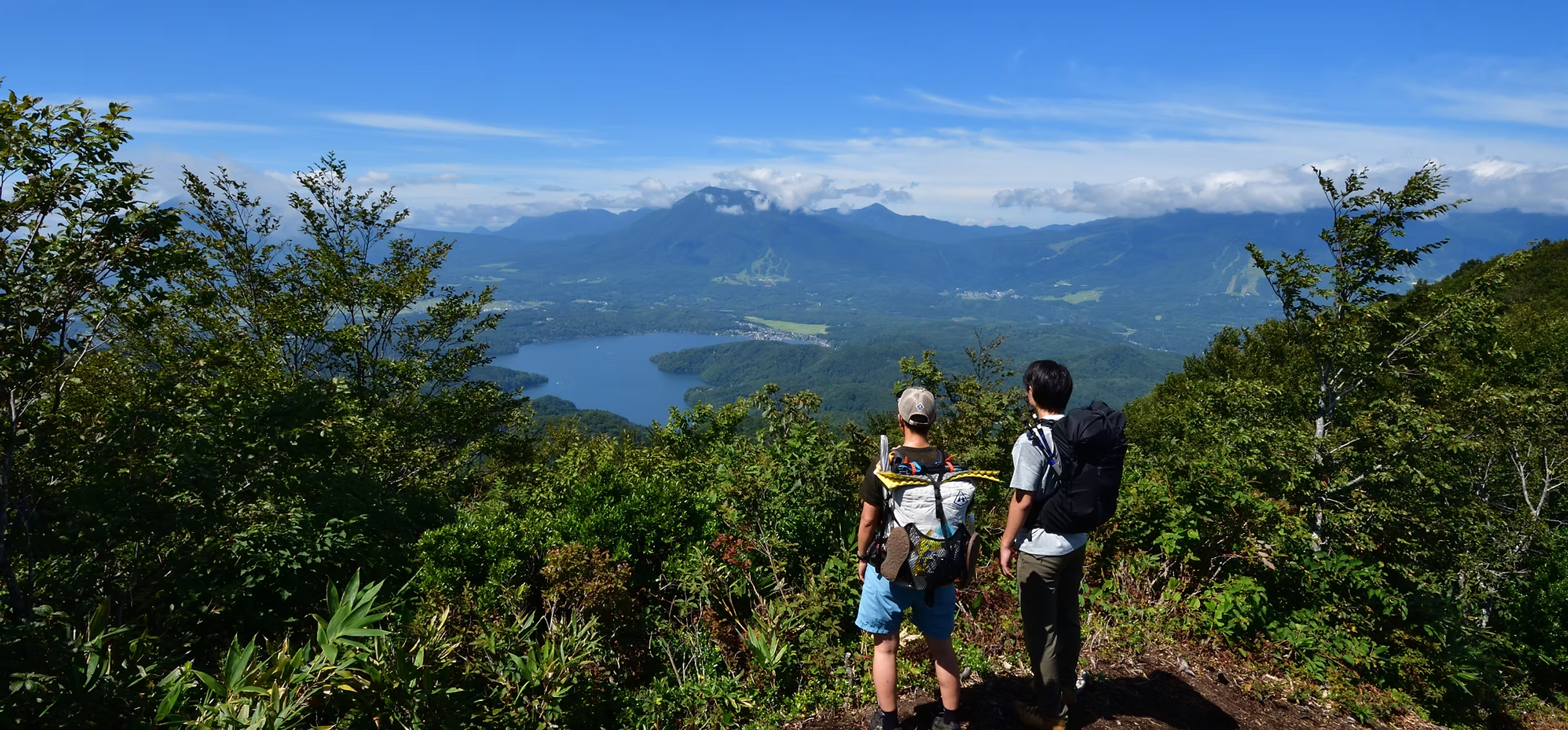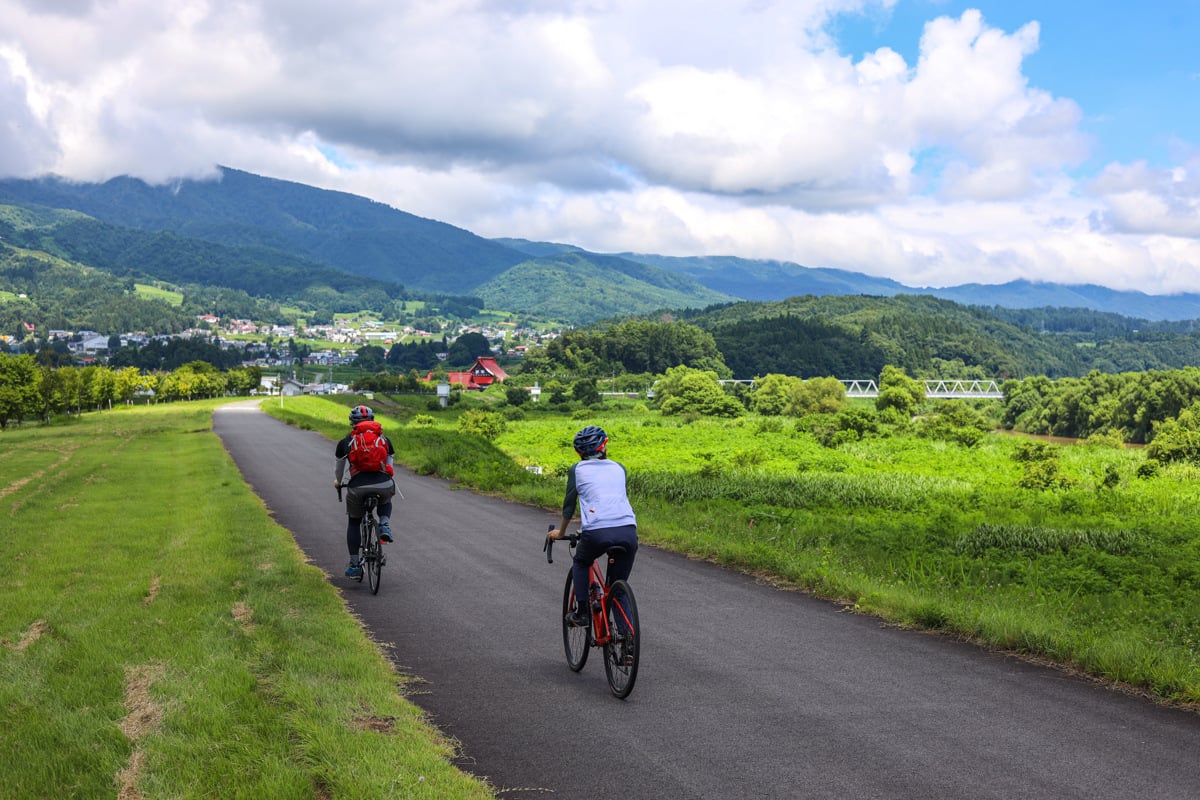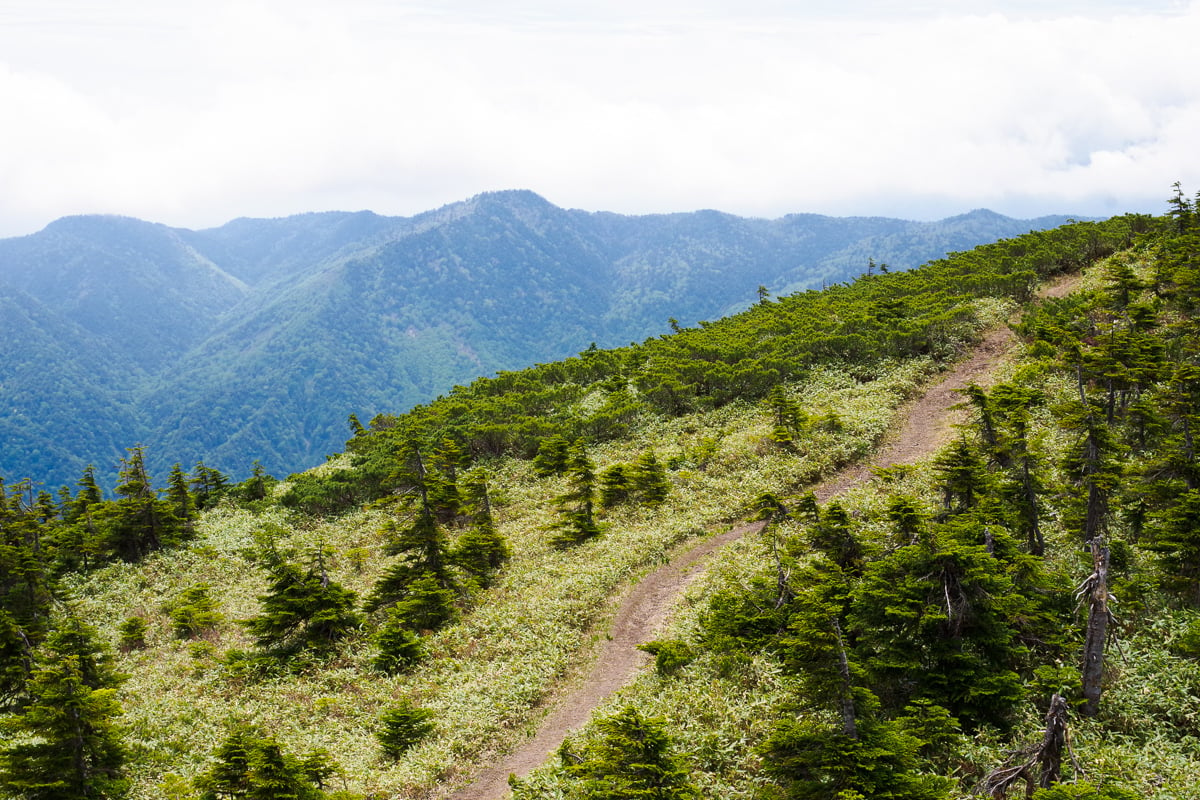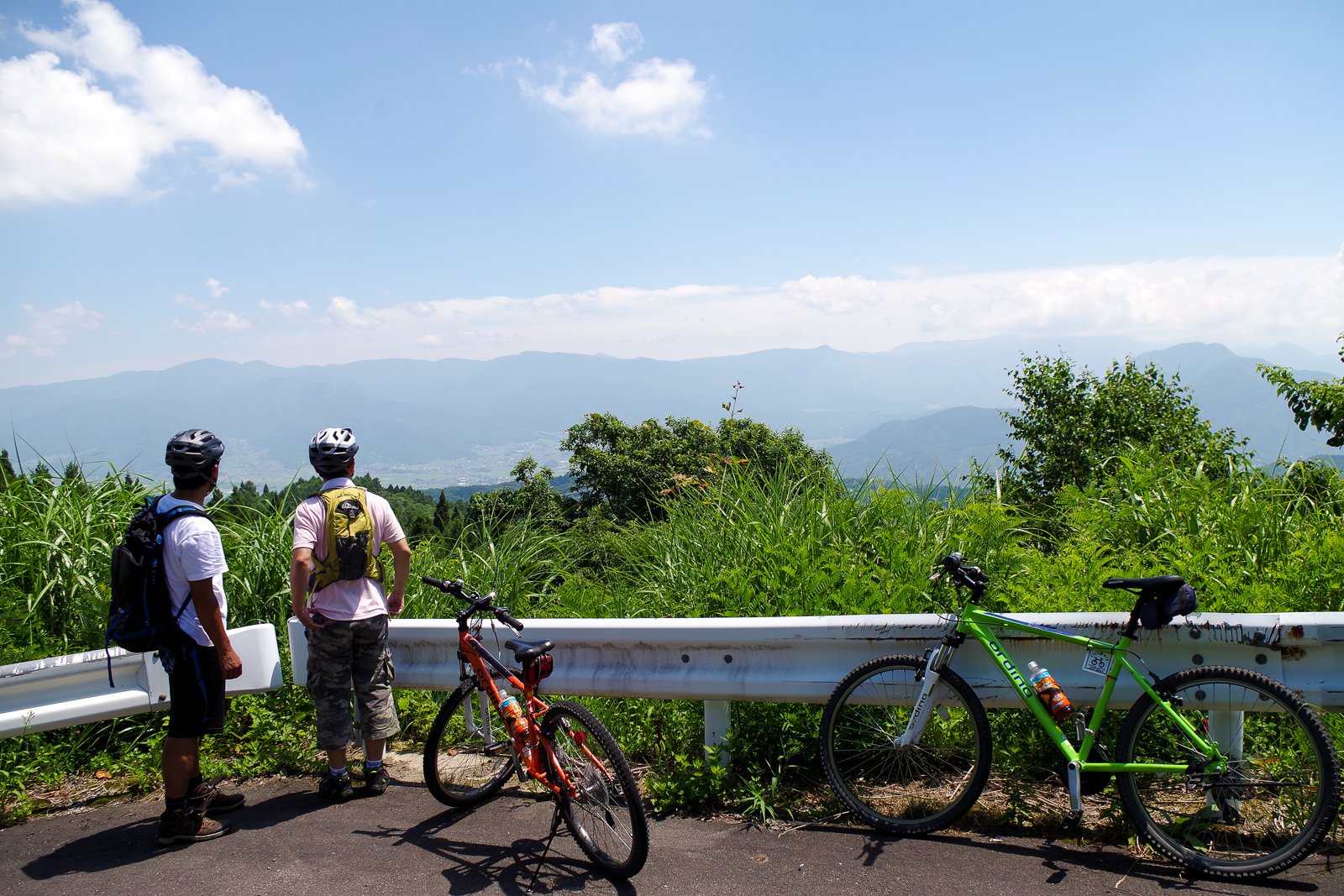Nature Walks and Easy Hikes through Nagano and the Japanese Alps
Trek the Japanese Alps, delve into a moss world, cross an alpine marsh on a boardwalk and more!

Anxious to explore Japan’s rugged nature but short on time or hiking gear? Nagano abounds in quick and easy treks with convenient access, suitable for all ages and abilities. So, peruse these hiking suggestions, grab your daypack and go!
Nature Walks and Easy Hikes through Nagano and the Japanese Alps
- Kamikochi, Gateway to the Japanese Alps (Chubu Sangaku National Park, Northern Alps Area)
- Tsugaike Nature Park: Alpine Flower Wonderland (Chubu Sangaku National Park, Northern Alps Area)
- The Highlands of Shiga Kogen (Joshin-etsu Kogen National Park, Northern Nagano)
- Togakushi: Ancient Cedars and Mystical Shrines (Northern Nagano)
- Madarao and the Shin-etsu Trail (Northern Nagano)
- Akasawa Natural Recreational Forest (Kiso Valley)
- Shirakoma Pond’s Moss Forest and Yachiho Kogen Nature Park (Eastern Nagano)
- Highland Plateau and Wetlands: Kirigamine and Yashimagahara (Lake Suwa Area)
Kamikochi, Gateway to the Japanese Alps (Chubu Sangaku National Park, Northern Alps Area)

The turquoise-blue Azusa River, the iconic Kappa Bridge, serene Myojin Pond, and the towering 3,000-meter Hotaka Mountain Range—Kamikochi offers majestic scenery at every turn. And the gem of the Northern Japanese Alps is not just a haven for hardcore mountain climbers, paths in the basin are meant for sneakers, not boots.
The beginner’s route is the 1-hour loop from the Kamikochi Bus Terminal to the Kappa Bridge, then follow the Azusa River via the Weston Relief (dedicated to Walter Weston, the “Father of Modern Japanese Mountaineering”) to Tashiro Bridge and back to the Bus Terminal.
Recommended Courses:
- Kappa Bridge to/from scenic Taisho Pond (75 min.)
- Kappa Bridge to/from mystical Myojin Pond (60 min.)
- Myojin Pond to/from Yokoo base camp via the Tokusawa Campground (130 min.)
Kamikochi is especially stunning in early spring with new green growth and the Alps still covered in snow (May), as well as during peak autumn color season (October). Be warned it gets crowded on weekends and in August. Avoid the hordes of day-trippers by spending the night at one of the area’s many lodges and enjoy trekking in peace at dusk or dawn.
Access: By car, Kamikochi is closed to private vehicles so park at Sawando (60 min. from Matsumoto Interchange) and take a shuttle or taxi to Kamikochi Bus Terminal (30 min.). By train, from Matsumoto Station take the Alpico Kamikochi Line to Shin-Shimashima Station (30 min.) then bus to Kamikochi Bus Terminal (60 min.)
Website: https://www.kamikochi.org/
Tsugaike Nature Park: Alpine Flower Wonderland (Chubu Sangaku National Park, Northern Alps Area)

Access to this 2,000-meter-high treasure trove of alpine plants in the northern Hakuba area is easy as a breeze thanks to a convenient gondola and ropeway. Skunk cabbage (marsh lilies) bloom in early summer followed by daylilies and other alpine plants. Visitors wander the fields on the boardwalk paths suitable for all (part of the Mizubasho Marsh path is even wheelchair accessible).
Recommended Courses:
- Mizubasho Marsh (1 hr. roundtrip)
- Watasuge Marsh (90 min. roundtrip)
- Ukishima Marsh (2 hr. 30 min. roundtrip)
- Tenbo Marsh (3 hr. 30 min. roundtrip)
Access: From Nagano Station by Alpico Hakuba / Tsugaike / Hakuba-Norikura Line bus, 1 hr. 35 min.
Website: https://sizenen.otarimura.com/walking/ (Japanese)
The Highlands of Shiga Kogen (Joshin-etsu Kogen National Park, Northern Nagano)

Reaching to an elevation of 2,307 meters (Mt. Yokote), the highlands of Shiga Kogen abound with natural beauty and majestic mountain scenery. The area’s wide range of trekking and hiking courses take visitors past ponds, marshes and forests to its tallest peaks. Azaleas bloom in early summer followed by daylilies and other high alpine plants, then dazzling autumn colors.
Recommended Courses:
- Sunshine Trail to Mizunashi Pond (1 hr. 30 min.)
- Okura Shindo Trail (1 hr. 15 min.)
- Seseragi Trail (60 min.)
- Nature Discovery Trail (2 hr.)
- Ikemeguri Trail (9.6 km, 3 hr. 30 min.)
Access: From Nagano Station, 70 minutes by Nagaden Express bus.
Website: https://www.shigakogen.gr.jp/english/index.html?hl=en
Togakushi: Ancient Cedars and Mystical Shrines (Northern Nagano)

Located high above central Nagano City, Togakushi is renowned for spiritual power, especially the ancient cedar trees lining the path to Okusha, the Inner Shrine. In winter, the path to Okusha’s cedars is traveled well enough that is it passable in regular shoes. For those properly equipped, Togakushi is a snowshoeing paradise.
Recommended Courses:
- Okusha Shrine Roundtrip (90 min.)
Features 400-year-old cedar trees beyond the Zuishinmon Gate - Five-Shrines Course (5 hrs.)
Connects Togakushi’s five shrines (Hinomikosha, Hokosha, Chusha, Kuzuryusha and Okusha) - Ikemeguri Course around Kagami Pond (4 hr. 40 min.)
Access: From Nagano Station by Alpico Bus (60 min., reservations required)
Website: https://togakushi-21.jp/en/
Madarao and the Shin-etsu Trail (Northern Nagano)

Featuring 16 trekking trails for a total of 80 kilometers covering 3 mountain peaks, 3 marshes and 4 ponds, Madarao is a hiker’s paradise. It is also the start of the Shin-etsu Trail which winds 110 kilometers along the Niigata-Nagano border. The trail provides glimpses of life in Northern Nagano’s snow country. It passes near Togari Hot Springs and the beech forests of Nabekura Highlands, both of which are access points for those wishing to do partial hikes of the trail.
Access: From Iiyama Station, Nagaden Bus to Madarao Kogen (22 min.)
Website: https://www.madarao.info/trekking (Japanese)
Akasawa Natural Recreational Forest (Kiso Valley)

One of Japan’s Three Most Beautiful Woodlands, Akasawa boasts hinoki (Japanese cypress) trees that are over 300 years old. Located deep in the Kiso Valley known for the Nakasendo Trail, Akasawa is renowned as a forest-bathing site. Walking through the woods and breathing in fresh air has a rejuvenating effect on visitors. Trekking course lengths vary from thirty minutes to two hours and can be combined with a twenty-minute-long scenic train ride.
Recommended Courses:
- Fureai Road (1 hr. roundtrip)
Wheelchair accessible - Komadori Loop Course (70 min.)
Includes the forest’s most popular sights and the two largest hinoki trees - Mukaiyama Loop Course (1 hr.)
The best mountain vistas as well as intricate tree root features - Keiryu Loop Course, (40 min)
Follows a serene mountain stream
Access: From Agematsu Station on the JR Chuo Line, 30 minutes by bus. (If by car, parking is 700 yen.)
Shirakoma Pond’s Moss Forest and Yachiho Kogen Nature Park (Eastern Nagano)

On the northern side of the eight peaks of Yatsugatake are two fantastic woodland walks: the Moss Forest of Shirakoma Pond and Yachiho Kogen Nature Park.
Shirakoma Pond is a natural body of water located high up at 2,100 meters elevation and surrounded by forest carpeted in over 450 varieties of moss. From the parking lot, the 15-minute approach to the shore and 45-minute loop around the lake are all on a boardwalk to help preserve the moss.
A short drive down the mountain, Yachiho Kogen Nature Park features three gentle walking paths threading through a white birch forest. The “Blue Loop” (50 min) passes some gurgling waterfalls on the way to Yuki (playing turtle) Pond.

Connecting the Nature Park and Shirakoma Pond is the Shinanoji Nature Trail, a 90-minute hike (boots recommended) over Mt. Kengamine.
Access: best by car (16 min. from Yachiho Kogen Interchange on the E52) as bus service (70 min. from Sakudaira Station) is only seasonal.
Fees: Shirakoma Pond (Parking)/600 yen, Yachiho Kogen (Entrance)/300 yen
Website: https://yachiho.jp/climbing/ (Japanese)
Highland Plateau and Wetlands: Kirigamine and Yashimagahara (Lake Suwa Area)

The gently rolling Kirigamine Plateau offers a variety of trekking options including the leisurely walk around the Yashimagahara Wetlands. The elevation ranges from 1,500 meters to 1,925 meters atop Mt. Kurumayama. Kirigamine is famous for the bright yellow daylilies that bloom in early summer, as well as its namesake fog (“kiri” in Japanese).
Recommended Courses:
- Nature Conservation Center to Wasureji-no-Oka Hill Course (1 hr.)
Visits Kirigamine’s symbolic fog bell tower and a launching point for gliders - Kurumayama Kata (Mt. Kurumayama’s Shoulder) to Venus Hill Course (1 hr.)
A paradise of daylilies and panoramic views - Yashimagahara Wetlands to Visitors Center Course (90 min. around).

Access: Busses run from JR Kamisuwa Station (40 min.) infrequently on weekends and during peak season in August. By car, Kirigamine is accessible by the scenic Venus Line.
Website: https://www.kirigamine-vc.jp/english




